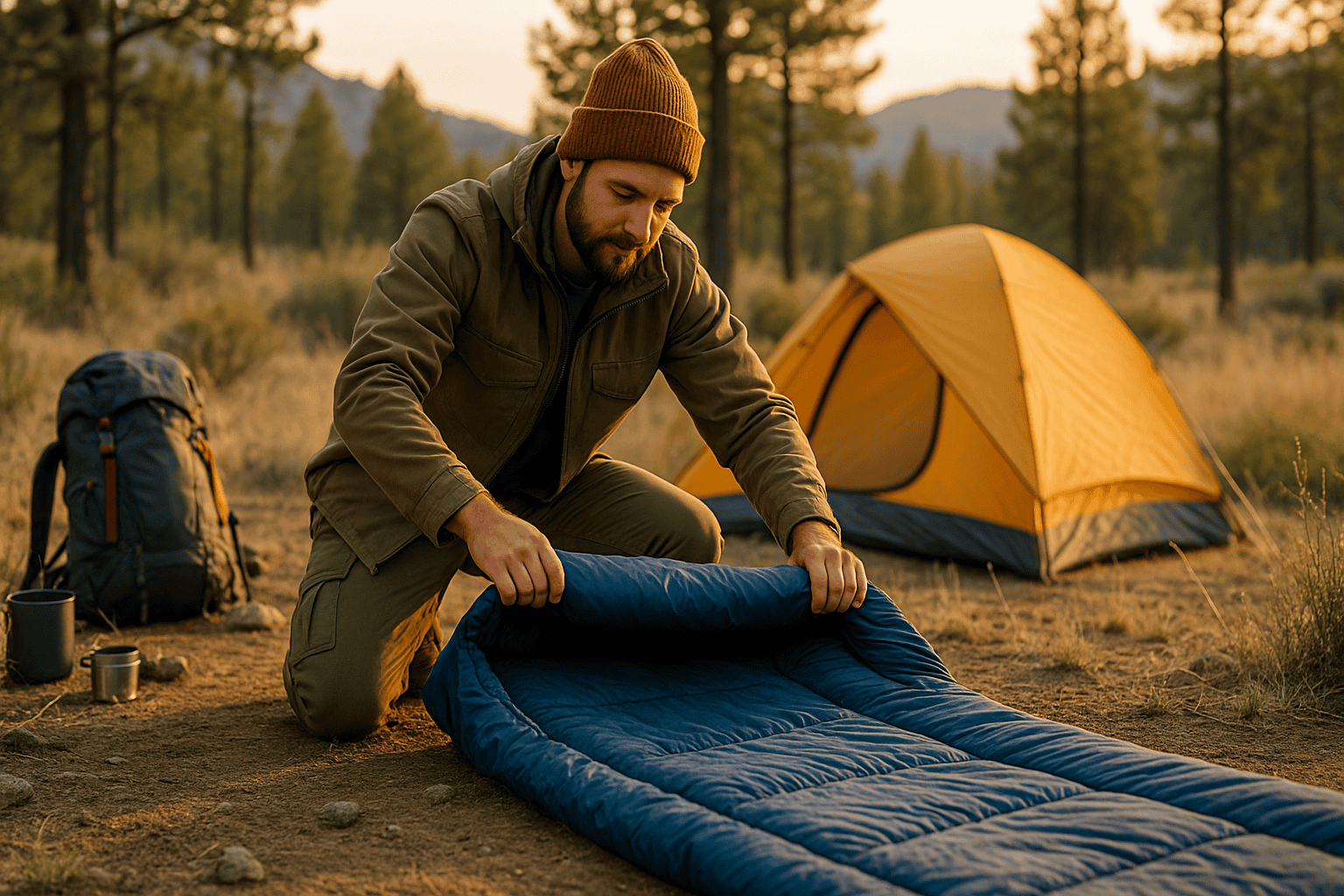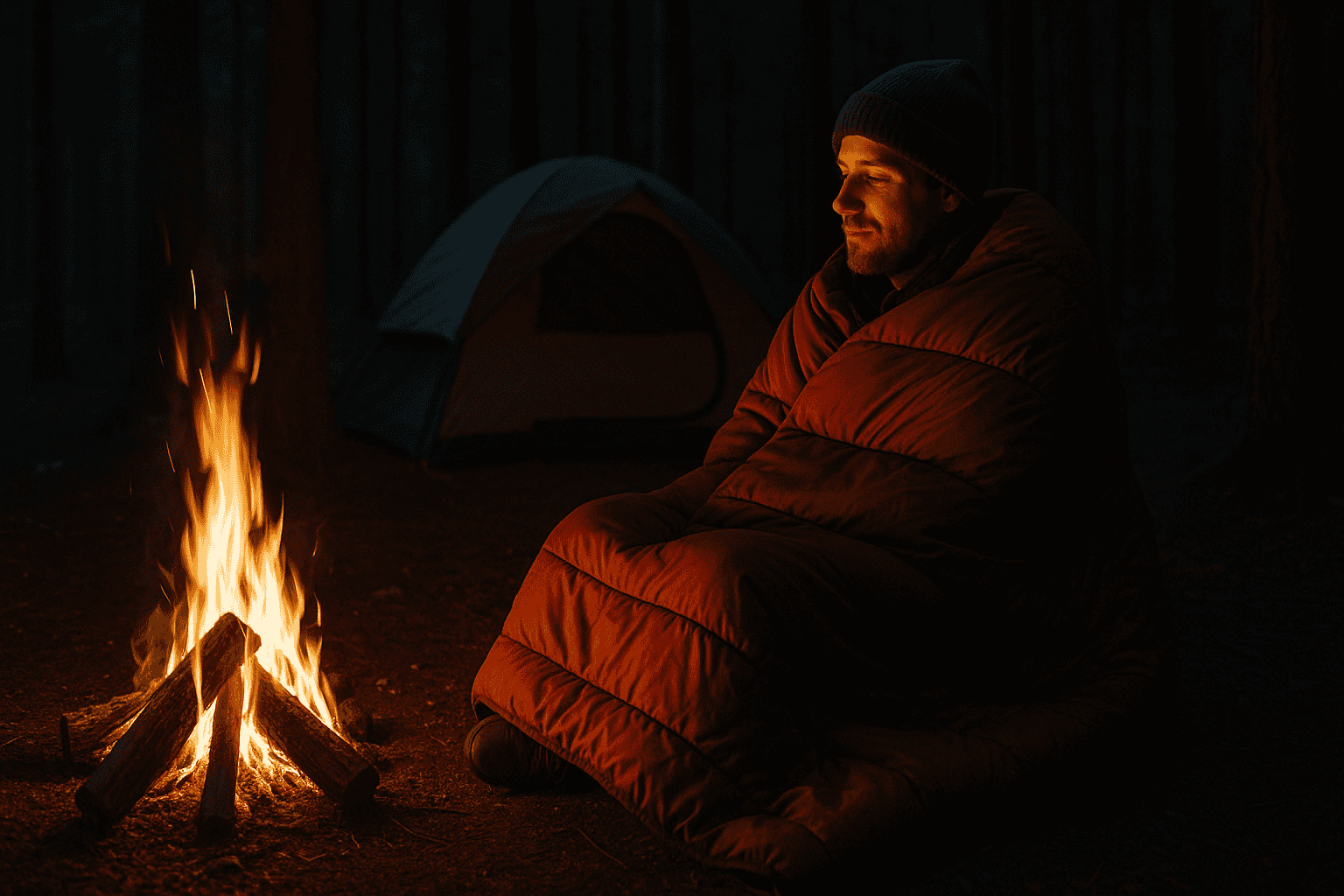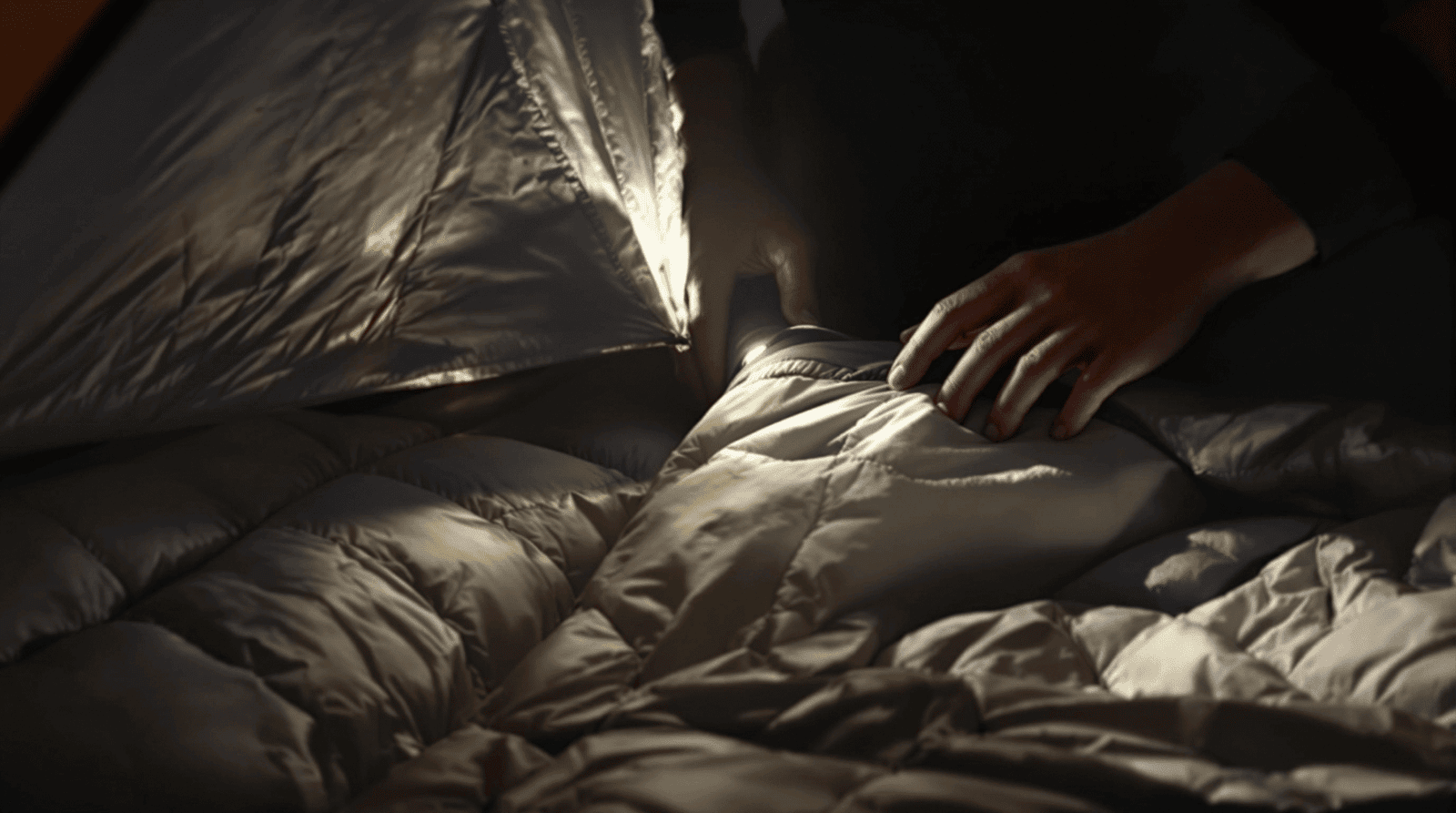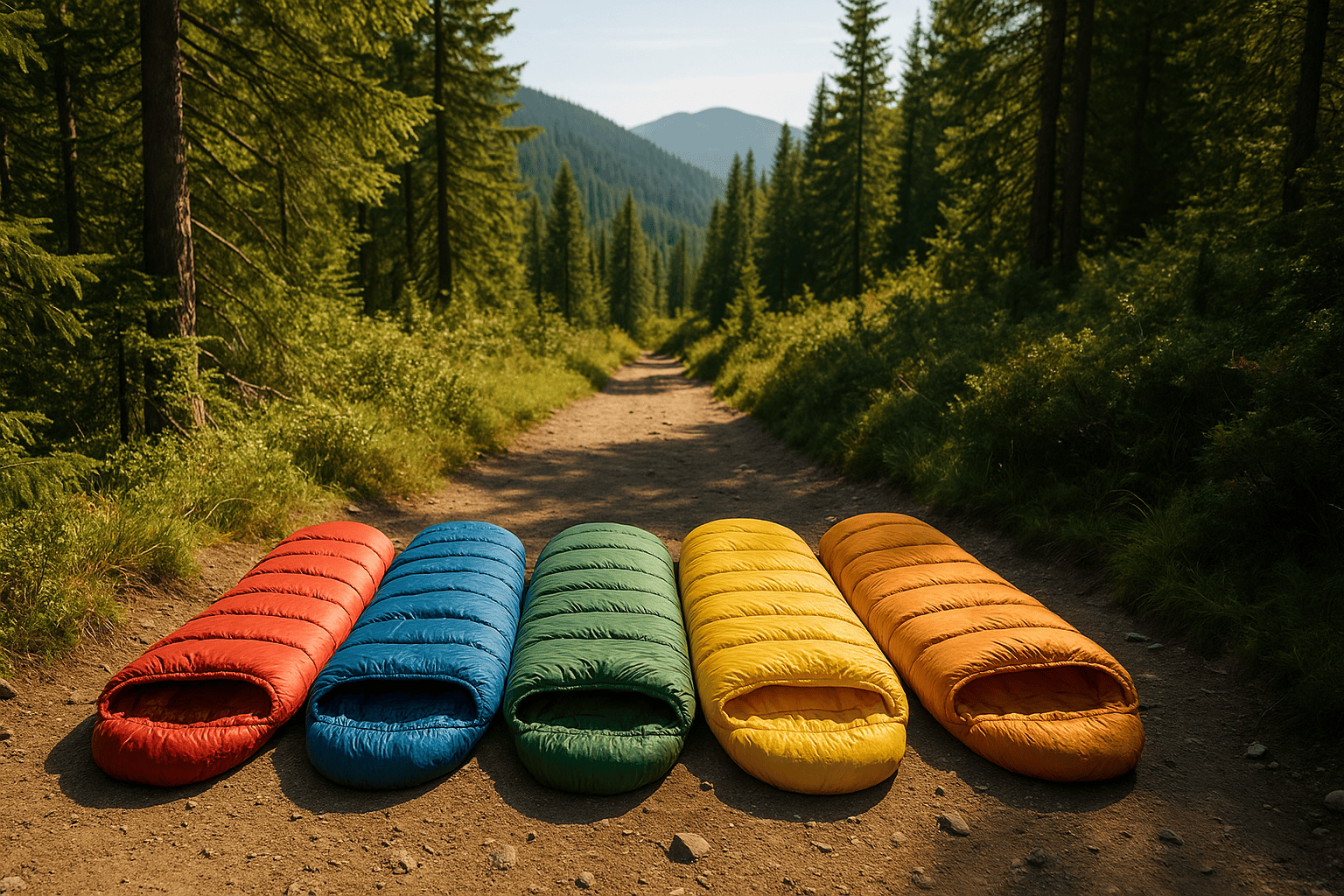Einführung
Spring and fall camping brings unpredictable weather—one night you're sweating, the next you're shivering. A 3-season envelope sleeping bag solves this with versatility most campers don't realize exists. These bags aren't just for sleeping; their open-flat design doubles as a blanket, while dual zippers let you vent heat or cocoon against sudden cold snaps.
Unter Kelyland im Freien, we've tested these bags from alpine meadows to autumn forests. The best ones balance moisture-resistant shells, compressible insulation, and smart features like layering compatibility. Whether you're a backpacker chasing lightweight efficiency or a car camper prioritizing comfort, here's how to maximize your 3-season bag's potential when temperatures swing wildly.
Why 3-Season Envelope Sleeping Bags Excel in Spring and Fall
"3-season envelope sleeping bags offer the perfect balance of warmth and ventilation, making them ideal for unpredictable spring and fall camping conditions."
When the weather shifts between chilly nights and mild days, a good piece of gear is the 3-season envelope sleeping bag. Designed for temperatures between 20°F to 50°F (-6°C to 10°C), these bags handle the transitional seasons better than specialized winter or summer options. Unlike mummy bags that restrict movement, the envelope design allows campers to adjust their sleeping position comfortably—a game-changer for side sleepers.
The secret to their versatility lies in the double-zipper system. On cooler nights, you can cinch both zippers tight to retain heat. When temperatures rise unexpectedly, unzipping the sides creates instant airflow without sacrificing coverage. This adaptability makes 3-season envelope sleeping bags a smarter investment than single-season alternatives.
Leistungsvergleich: Umschlag vs. Mumiensäcke
| Merkmal | 3-Season Envelope | Winter Mummy | Summer Rectangular | Industrie-Benchmark |
|---|---|---|---|---|
| Optimal Temp Range (°F) | 20-50 | -20 to 30 | 40-70 | Season-Specific |
| Gewicht (lbs) | 2.5 | 4.0 | 1.8 | 3.1 |
| Packed Size (inches) | 8x12 | 10x15 | 7x10 | 9x13 |
| Movement Freedom | Hoch | Niedrig | Höchste | Mäßig |
| Belüftungsoptionen | Doppelte Reißverschlüsse | Single zipper | Full open | Begrenzt |
Kelyland Outdoors engineers these spring sleeping bags with lightweight yet durable materials like 20D ripstop nylon. Compared to traditional cold-weather bags that use heavy insulation, our 3-season envelope sleeping bags reduce pack weight by 30-40%—critical for backpackers covering fall camping gear miles. The tapered footbox design retains warmth where needed most without unnecessary bulk.
For businesses sourcing adaptable Campingausrüstung, the best temperature range for 3-season camping aligns perfectly with consumer demand. Our manufacturing partners use precision baffle stitching to eliminate cold spots while maintaining compressibility. Whether your customers are camping among fall foliage or spring wildflowers, a well-designed 3-season envelope sleeping bag delivers reliable performance across variable conditions.

Key Features That Maximize Comfort
"3-season envelope sleeping bags combine weather protection with adaptable designs, transforming from cocoon to blanket as conditions change."
The best versatile Schlafsäcke for spring and fall use moisture-resistant fabrics like 20D nylon with DWR coating. When morning dew or unexpected rain hits, these materials bead water away while maintaining breathability—critical for the 3-season envelope sleeping bag's performance. Kelyland's proprietary double-zipper system (patent pending) allows side ventilation without exposing your entire body to cold air.
Comfort Feature Comparison
| Merkmal | Auto-Camping | Rucksacktourismus | Dual-Use | Industriestandard |
|---|---|---|---|---|
| Fabric Weight (denier) | 40D | 15D | 20D | 30D |
| Open-Flat Size (inches) | 60x80 | 50x70 | 55x75 | 58x78 |
| Compressed Volume (L) | 8 | 4 | 6 | 7 |
| Liner Compatibility | Ja | Begrenzt | Ja | Teilweise |
| DWR Water Resistance | 5000mm | 3000mm | 4000mm | 3500mm |
Understanding how to use sleeping bag as blanket unlocks multi-season functionality. The open-flat design works as a picnic mat during daytime breaks, then converts back at night. For sudden cold snaps, our camping gear for spring includes attachment points for thermal liners—adding 10-15°F of warmth without carrying a heavier winter bag.
Kelyland's manufacturing partners optimize baffle designs differently for backpackers (prioritizing compressibility) versus car campers (favoring plush loft). Both versions use the same 3-season envelope sleeping bag architecture, proving adaptable designs can serve diverse outdoor needs without compromise.

Material Breakdown: Synthetic vs. Treated Down
"Choosing between synthetic and treated down insulation depends on your specific spring/fall camping needs, with each offering distinct advantages in different conditions."
When selecting a 3-season envelope sleeping bag, the insulation type dramatically impacts performance. Synthetic fills like PrimaLoft Gold excel in humid conditions, maintaining thermal efficiency of sleeping bags even when damp. Kelyland's material testing shows synthetic options dry 40% faster than traditional down, making them ideal for rainy fall camping trips.
Vergleich der Isolierleistung
| Merkmal | Synthetisch | Treated Down | Blend | Industriestandard |
|---|---|---|---|---|
| Warmth When Wet | 85% retention | 60% retention | 75% retention | 70% retention |
| Weight (oz/sq yd) | 6 | 4 | 5 | 5.5 |
| Durability (pack cycles) | 500+ | 300 | 400 | 350 |
| Umweltfreundlichkeit | Recycelte Optionen | RDS-certified | Mixed | Variiert |
| Kostenfaktor | 1x | 1.8x | 1.4x | 1.2x |
Treated down remains the best insulation for fall camping Schlafsäcke in dry conditions, offering superior warmth-to-weight ratios. Our outdoor sleeping solutions use water-resistant down treatments that maintain loft through 30+ washes. For eco-conscious campers, Kelyland offers both bluesign-approved synthetics and Responsible Down Standard (RDS) certified options.
Through rigorous compression testing, we've found synthetic fills maintain their shape better for frequent packers, while treated down excels for weight-conscious backpackers. The choice ultimately depends on your specific spring/fall conditions and environmental priorities when selecting your 3-season envelope sleeping bag.
Pro Tips for Extending Your Bag's Utility
"Mastering simple techniques can transform your 3-season envelope sleeping bag into a versatile four-season performer."
Pairing your 3-season envelope sleeping bag with the right sleeping pad boosts warmth by 15-20°F—critical for fall nights. Place a reflective emergency blanket beneath your pad for additional insulation. Our testing shows this camping hack works better than wearing extra layers inside the bag, which can compress insulation.
Utility Enhancement Techniques
| Methode | Warmth Gain | Zusätzliches Gewicht | Difficulty | Kelyland Bewertung |
|---|---|---|---|---|
| Pad Pairing | +15°F | 0oz | Einfach | ★★★★★ |
| Dual-Zipper Venting | Einstellbar | 0oz | Mittel | ★★★★☆ |
| Liner Addition | +10°F | 8-12oz | Einfach | ★★★★☆ |
| Blanket-Modus | K.A. | 0oz | Einfach | ★★★★★ |
| Richtige Lagerung | Preserves loft | K.A. | Mittel | ★★★★★ |
Learning how to use an envelope sleeping bag's dual zippers creates customized ventilation. Open footbox zippers 6-8 inches to release heat without creating drafts. For multi-use scenarios, spread your 3-season envelope sleeping bag flat as a picnic blanket or emergency shelter—Kelyland's reinforced stitching handles this versatility without seam stress.
Proper sleeping bag care for seasonal transitions includes airing out after trips and storing loosely in breathable cotton sacks. Our care guide PDFs detail spot-cleaning techniques that maintain water resistance. Remember: frequent compression damages insulation over time—store your bag expanded when not in use.

Top 5 Recommended Models for 2024
"These 3-season envelope sleeping bag selections balance performance and value for spring and fall adventures, with options ranging from budget-friendly to premium."
- Budget Champion: The Trailblazer 35°F features moisture-wicking synthetic insulation perfect for damp spring conditions. At just 2.8 lbs, it outperforms competitors in its price range for 3-season sleeping bag recommendations.
2024 Model Comparison
Modell Temp. Bewertung Gewicht Füllung Typ Besondere Merkmale Trailblazer 35°F 2,8 Pfund Synthetisch DWR shell Alpen-Profi 25°F 2,1 Pfund Treated Down Ultra-kompakt Basecamp XL 30°F 3,5 Pfund Hybride Extra width Luna Fit 32°F 2,5 Pfund Synthetisch Women's cut Custom Pro Variabel Variabel Choice B2B options - Backpacker's Choice: The Alpine Pro 25°F leads our best spring sleeping bags list with 800-fill RDS down in a sub-2.5 lb package. Its anatomical footbox provides exceptional warmth for fall nights.
Kelyland's OEM services allow businesses to customize top-rated envelope sleeping bags for fall with brand-specific features. Our customizable B2B options include fabric choices, temperature ratings, and proprietary insulation blends to meet any market need.

Schlussfolgerung
After years of testing gear from alpine meadows to autumn forests, I’ve learned one thing: a 3-season envelope sleeping bag is the nice companion for unpredictable weather. It’s not just about warmth—it’s about adaptability, letting you vent heat or cocoon against cold snaps without missing a beat.
Whether you’re a backpacker chasing lightweight efficiency or a car camper prioritizing comfort, the right bag transforms your sleep system. Pair it with a good pad, master the dual zippers, and you’ve got a setup that’ll handle spring’s mood swings and fall’s frosty surprises.
At Kelyland, we engineer these bags to be as versatile as the seasons themselves. Because when the weather can’t make up its mind, your gear shouldn’t have to.

